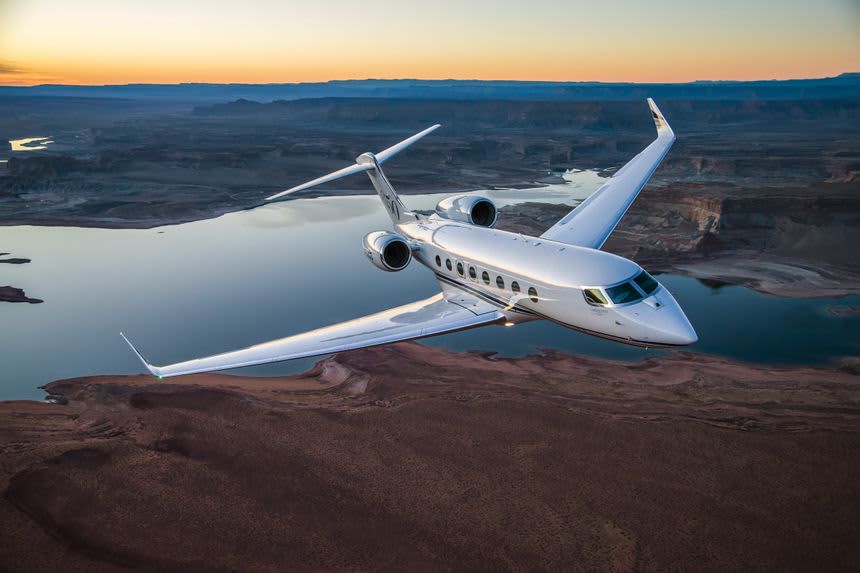SpaceX wants to test its Starlink satellite internet network inflight with a Gulfstream jet

A Gulfstream G650 in flight
Gulfstream
SpaceX would like to further expand testing of its Starlink satellite internet by connecting the network to aircraft, the company revealed in a recent request to the Federal Communications Commission.
Elon Musk’s space company on Nov. 6 asked the FCC if SpaceX could add Starlink user terminals “on a Gulfstream jet for a period of up to two years.”
“SpaceX seeks experimental authority for operation of one user terminal aboard each of up to five private jets while they are (1) on the ground at an airport, and (2) in flight over the United States (including its territories and territorial waters),” the company wrote in the FCC filing.
User terminals are the small devices on the ground that connect to the company’s satellite internet network. SpaceX has begun sending user terminals to early beta testers of the service. While the FCC request describes the aircraft-mounted terminals as “electrically identical,” the Starlink user terminal for jets would assumedly have a different physical design than the consumer terminals in use on the ground – which Musk has described as built like a “UFO on a stick.”
A Starlink user terminal, which would connect consumers to the company’s satellite internet service.
SpaceX
The landed Falcon 9 rocket booster from SpaceX’s Demo-2 crewed mission returns to Port Canaveral in Florida.
SpaceX
Starlink is SpaceX’s plan to build an interconnected internet network with thousands of satellites, designed to deliver high-speed internet to anywhere on the planet. In October the company began a public beta test of Starlink, with service priced at $99 a month.
To date, SpaceX has launched nearly 900 Starlink satellites — a fraction of the total needed for global coverage but enough to begin providing service in some areas, including in the northwest United States. The company has begun to work with a handful of organizations in rural regions that Starlink satellites in orbit currently cover, such as Washington state.
The network is an ambitious endeavor, which SpaceX has said will cost about $10 billion or more to build. But the company’s leadership estimates that Starlink could bring in as much as $30 billion a year, or more than 10 times the annual revenue of its rocket business.
Subscribe to CNBC PRO for exclusive insights and analysis, and live business day programming from around the world.




